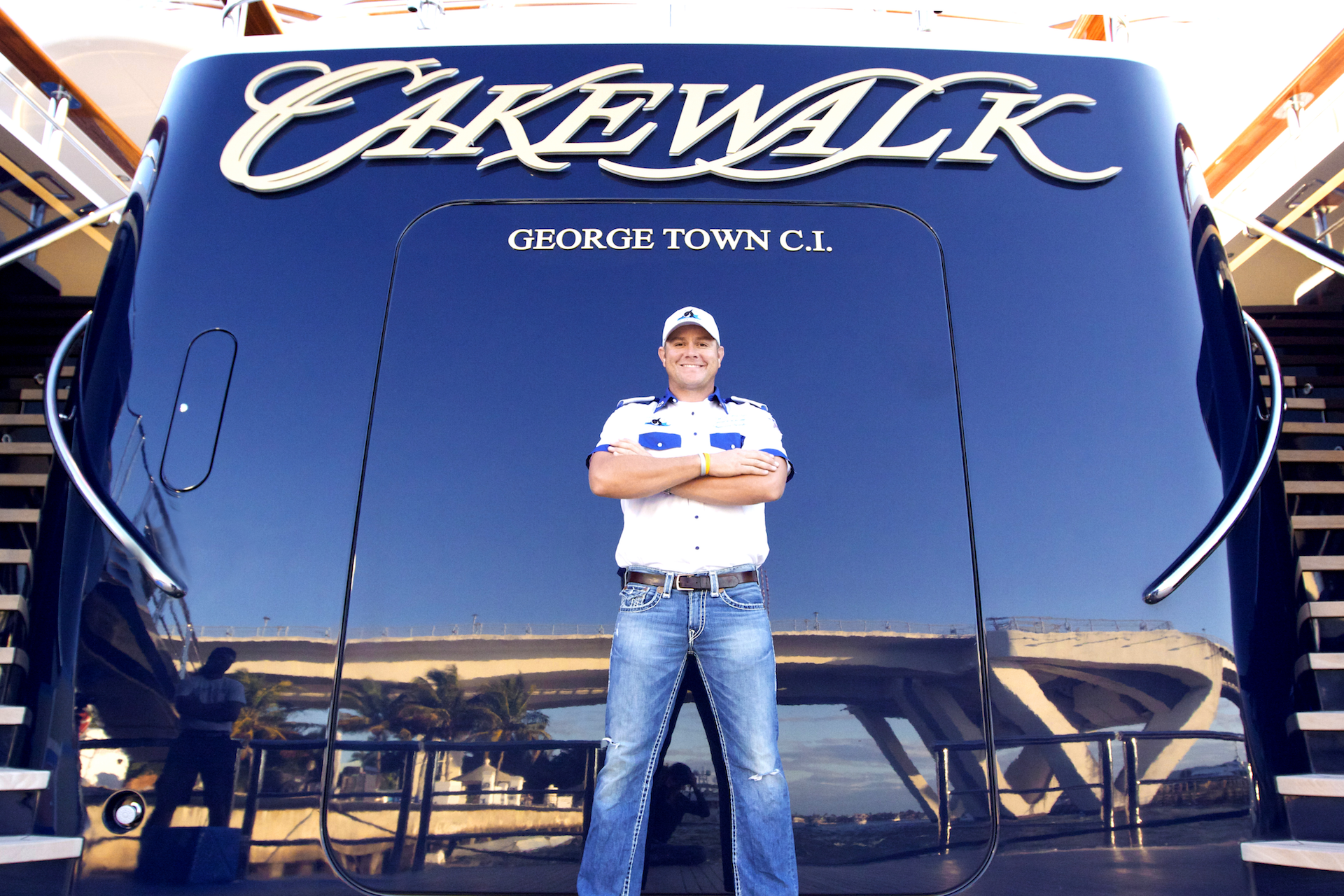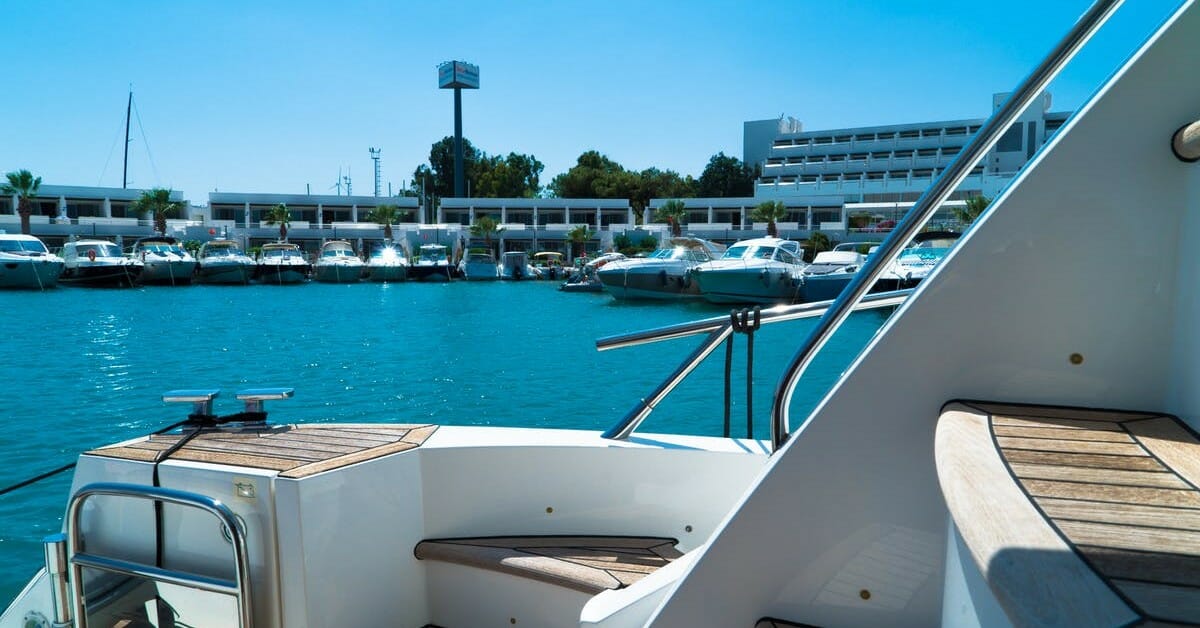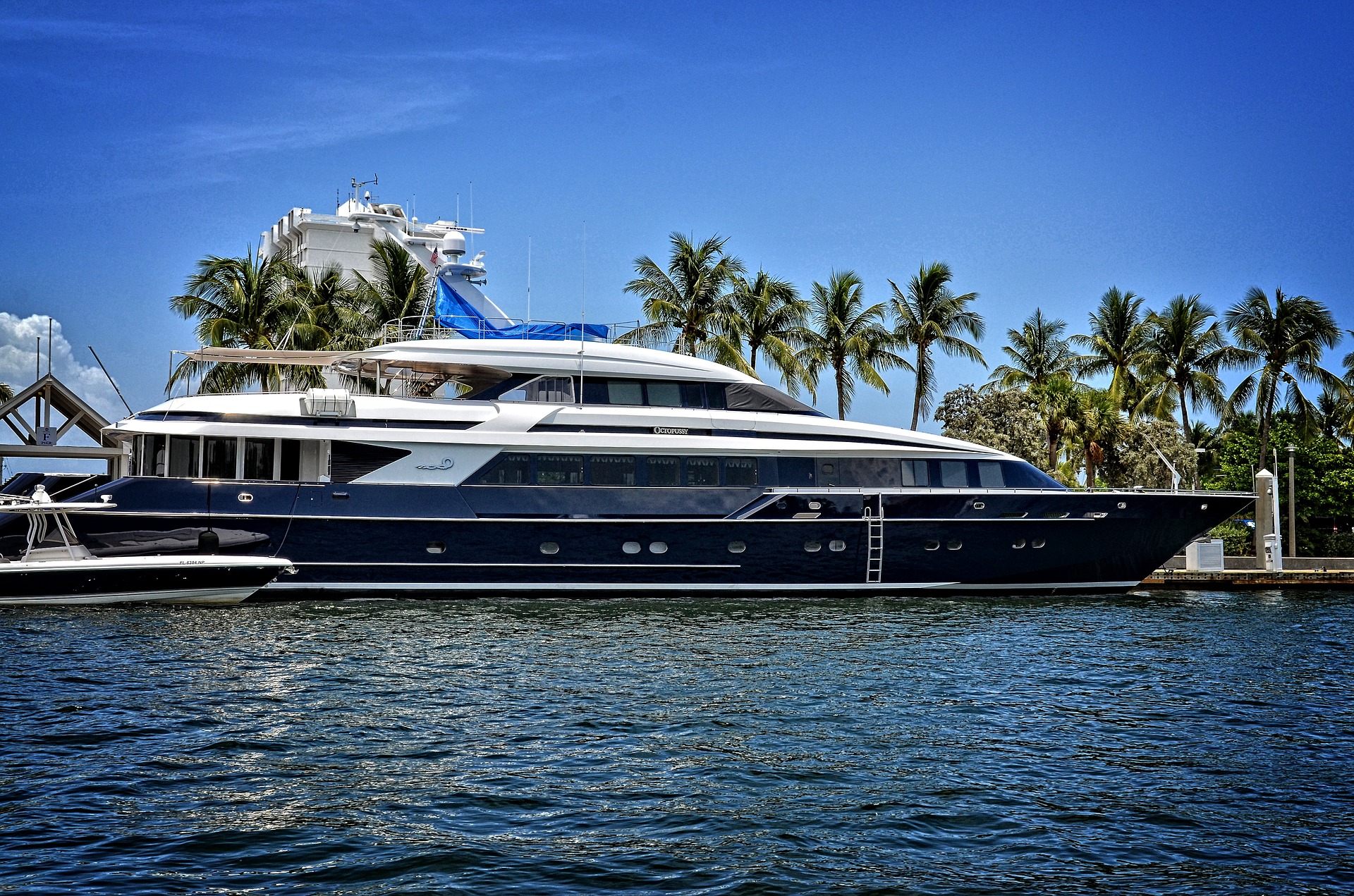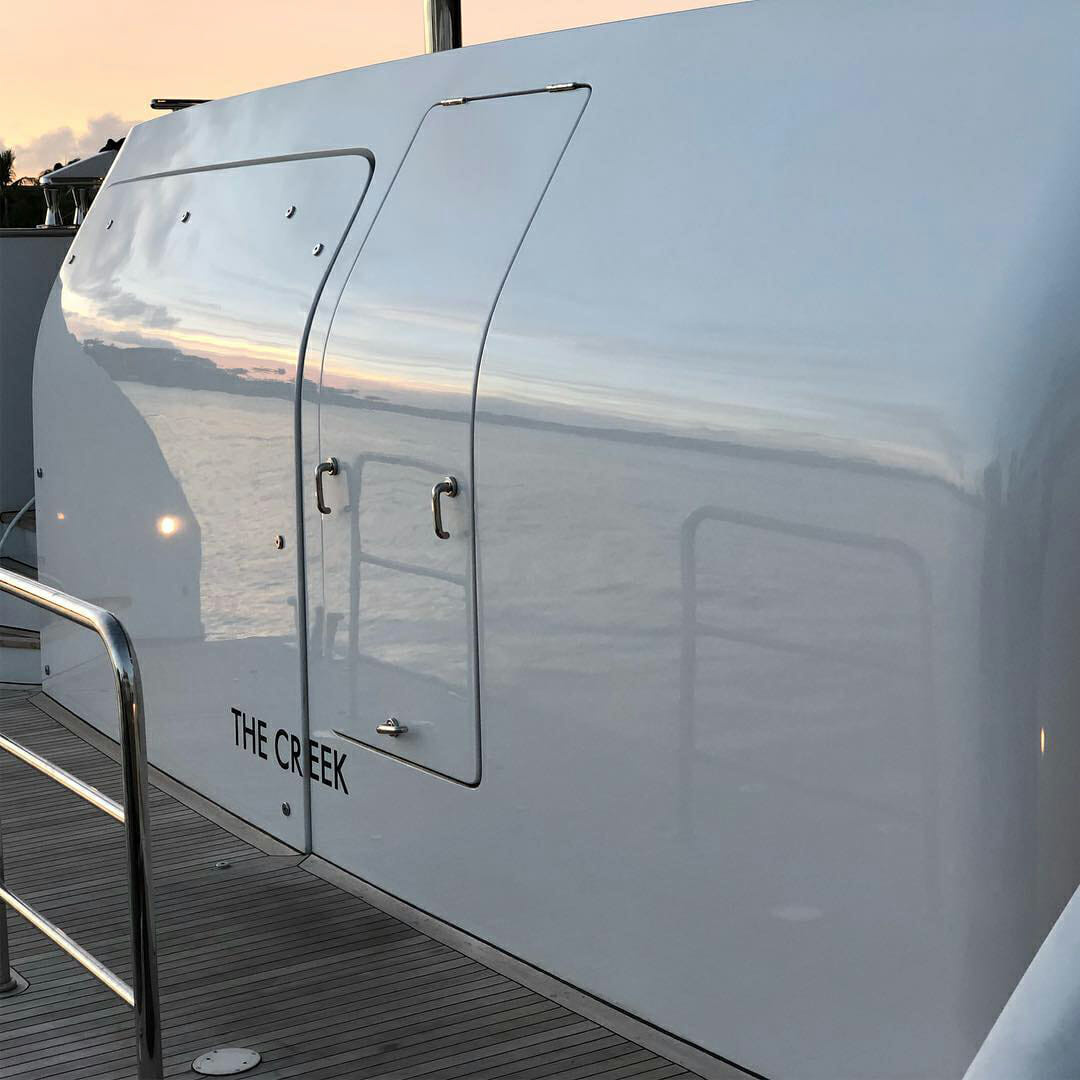Hello! I’m John Allen, the owner and founder of Deep End Yacht Protection.
I have a passion for paint – actually, a passion for saving YOUR yacht paint. This passion grew out of my job choice to work on yachts, which turned into a career focused on mastering the art and science of yacht paint correction and protection.
How Deep End Works for You and Your Yacht Care
A number of operators in the yacht care business have spent a few years detailing yachts and Googling ceramic coatings to learn about the products. They call themselves professionals; however, most don’t even know the difference between automobile paint and yacht paint. There is a BIG difference, and I know because I have dedicated my life to paint application and yacht aftercare. We’ve learned the hard way. When we started Deep End 16 years ago, YouTube videos were nonexistent, and they weren’t a way to learn things fast. In the past, a contractor needed to set up an account with a supplier or distributor and be vetted. Now, it’s as if Amazon can make anyone a Yacht “Specialist” with overnight delivery!
“The silver lining in being self-taught and learning the hard way is: that’s how wisdom works. Now we know how to do it right the first time. We have developed a proprietary process, techniques, and a one of a kind business model for large yacht aftercare.
The History of Deep End Superyacht Aftercare
I compare my career to going to medical school, doing a residency, and then, after years of on-the-job-training, becoming what I’d like to call a “cosmetic surgeon of paint preservation.” Rather than put your yacht paint through life-threatening surgery, we now focus on preventative medicine to keep your paint alive through years of
enjoyment. Regular maintenance and periodic refreshing must be part of your overall yacht wellness plan. At Deep End, we earned our residency in the hellish ER of South Florida, resuscitating hundreds of 40M+ paint jobs. The South Florida climate is ground zero for the toughest conditions known to man for perfecting a yacht polishing business. Those familiar with Deep End know that we run a tight ship, and our team is a tough as they come.
Then Came Ceramic
Although we’ve been involved with ceramic coatings since 2011, we watched how they started trending and came on strong. In keeping with the medical comparison, I see “ceramic” making its way into the yachting industry and as the “Big C,” and just like cancer, there are many types.
We see three main problems:
1. The private labeling of poor-quality products
2. Under-qualified vendors
3. Lack of transparency – many yacht detailers are not what they seem.
Ceramic is a misnomer and is used like Xerox or Kleenex as a name for a variety of products that can do a great deal of destruction to yacht paint if the wrong choices are made, and the wrong choices often cause pain in yacht captains’, owners’, or painters’ lives. The sickness has grown because the ceramic suppliers will sell to anyone – even those not buying the right product for the right use. Some of the ceramic suppliers will even build an inexperienced applicator a website to make them appear bigger and more experienced than they really are.
Know Your Ceramic
There are only a handful of manufacturers for ceramic raw materials globally and now there are thousands of brands. Oftentimes, ceramic companies claim their product is sourced from a particular country, while it is not. Most ceramic coatings come from China, and we believe they have no business on a superyacht paint job that took massive resources to execute.
Deep End evolved into paint application because we had to learn the process and learn how to do it right. We know that a yacht owner spends a massive amount of money and the wheelhouse goes through a massive amount of time, quoting, scheduling, dealing with yard periods, loss of use, and putting strains on numerous systems. All this happens to enable the professional painter to execute the most difficult paint operations. This art must be respected, but often, it can be avoided.
Like vitamins and supplements, ceramic coatings are not regulated; thus, applicators don’t exactly know what they’re getting. Like “quacks,” unethical ceramic vendors sell you something with vast claims but instead deliver what may be mildly beneficial (or sometimes, quite detrimental) like a ruined multimillion-dollar paint job. This happens often, but it’s swept under the rug because mistakes are embarrassing and costly.
Tried, Tested, and Proven Methods
Seeing the effect of ceramic on the industry, we spent several years and a great deal of money, weeding through scammers, buying, testing, and researching every product on the yacht market we could find – all at a great expense.
Thankfully, Deep End’s clients trust us – fully. We used various products on the yachts of long-time clients, testing low visibility and stress and exhaust areas. We even sent panels to panel farms for weather testing and self-funded series of accelerated xenon arc lab testing (not cheap). We learned that inevitably all of the products were private labeled and from the same basic batches. MSDS sheets had been falsified, as were terms and conditions and warranties. While this was depressing to learn, it was enlightening to the fact that we know what we shouldn’t be using. After our investigations into the established European ceramic products, we decided that the lack of transparency and questionable business practices were unbecoming of a large yacht caliber service provider.
It was a scary time because others with less integrity and experience were locking down hundreds of thousands of dollars per job, applying substandard products and practices. We realized that the trend of paint “protection” was here to stay, regardless that we had proven the products touted were not right for the yacht market. However, our recon mission was of tremendous value, as it armed us with valuable knowledge – truth.
We Stand Behind Our Work
We saw the effects of these products and were determined to keep our clients’ paint healthy but using only what we had tested and proven. That is how we operate – we deliver. We stand behind our work because we know we only get one shot at maintaining our excellent reputation. We present ourselves as a professional team and treat you, your crew, and your vessel with respect. We have taken the Hippocratic oath to “do no harm,” and we own it. We vow to preserve and protect your yacht paint.
We shifted our focus to the United States, where we chose to work with those focused on solutions and sound experience. We began testing through collaboration with the Department of Defense contractors of the U.S. Navy, Air Force, NAVSEA, bridges, oil rigs, and even the amusement park industries, working with the world’s most elite coatings engineers and corrosion prevention specialists. We were impressed by the technologies in these industries, and also surprised at how far behind yachting had fallen – so we became early adopters of military and infrastructure technology. One of the several advanced next-generation ominphobic protective coatings we have incorporated into our system is Gentoo, developed by aerospace giant LUNA over eight years, and spending $18 million in research on this anti-corrosive agent for Fighter Jets onboard aircraft carriers.
What You Need to Know About Paint and Sealants
When someone says they can remove ceramic coatings with acid gel, it’s a red flag and a looming death sentence for your linear polyurethane paint. Here’s why:
LPU yacht paint (Awlgrip, Alexseal, etc.) forms two layers. The first is a resin rich layer of solids and pigment that falls to the back. The second layer of clear protective resin rises to the top. This top layer can be ruined by one bad pass of a buffer, but the damage might not be seen for months and may then be technically “non-repairable.” For a long time we struggled with exhaust staining and the dreaded black streaks, but we learned how to handle that issue as well – without ruining your paint.
If the wrong type of sealant is put on the paint (whether it’s called ceramic or any other name) and you want to take it off, the acid removal gel will harm the paint – regardless of what anyone tells you. The acid eats through some of the 9H ceramic but doesn’t stop there. Not to mention, it gets washed into the water – which harms all forms of sea life. To remove the ceramic totally requires abrasion, or extra grit polishing, so there goes your clear protective paint resin.
The Deep End Method – Also Known as the Right Method
Deep End uses only certain thin film coatings, which need to be serviced at half-life – taking us back to the regular maintenance that accompanies the overall wellness plan for your yacht paint. It’s much more beneficial to keep your paint healthy than have to resuscitate, rejuvenate, or re-paint.
How Can Deep End Help You Save Your Yacht Paint?
First, call us before you paint, or before someone else tells you that they can apply or remove the ceramic from your yacht. We’ll work with you on evaluation and an effective action plan.
I built a team and business focused on solutions instead of sales. For your yacht aftercare, we incorporate:
– Innovation
– Technology
– Transparency
– Performance
This is where we developed the ORCA system – the world’s only proven Linear Polyurethane Polishing system, guaranteed to extend yacht paint for over a decade. We use the right product on the right part of the yacht – from the hull to radar equipment, to bright work and metals. This has taken tremendous dedication and expense, but it works – and we’re proud of it.
Protection is the Last Step – Not the First Step
We have always taken great care with that final and important step. We have promised a 12-month guarantee against oxidation for the past ten years with zero warranty claims. We figured out how to work on only the contaminated surface of G-series and remove only the oxidation, leaving the resin rich layer for future protection service. By mastering LPU, we know we can polish anything without damage.
We can extend a superyacht paint job for 15 years, still looking like the day it left the yard. We can reduce crew maintenance by 50%, eliminate 2-3 paint jobs, and also the consequential loss of use – all at a reasonable fixed-cost.
What’s the catch? There is none.
At Deep End, we do what we say and give more than expected. Try us and see!




